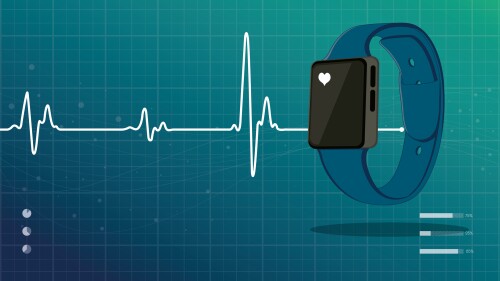Language barriers in law enforcement aren’t new, but they are a growing challenge. Whether it’s a traffic stop or a witness interview, being unable to communicate with the people we serve or accurately evaluate evidence slows everything down and increases the risk of things going wrong.
The truth is, we don’t have enough bilingual officers. Departments are stretched thin, and while some agencies use language line services or call in that one Spanish-speaking officer on shift, those options aren’t always fast, practical, or available. So, when I started seeing translation tech popping up online, I decided to find out for myself: Is this gear useful on the street?
I tested two devices from Timekettle — one high-end, one more budget-friendly — to see if they could help us bridge the gap. Here’s what I learned.
The bilingual gap is a real problem
Most departments don’t have enough officers who speak Spanish, let alone other high-demand languages like Portuguese, Vietnamese, Arabic, or Cantonese. That gap puts more pressure on the bilingual officers we do have and leaves the rest of us relying on slow or inconsistent workarounds.
Translation tech might not be the answer, but it could be a tool to help fill in some of the blanks.
The two devices I tested
Timekettle Zero Plug-In Translator – around $49.99
- Tiny device that plugs directly into your phone’s USB-C port
- Translates via phone screen and speaker — no earbuds required
- Translates over 40 languages
- Powered by phone (CON: Android only.)
Timekettle WT2 Edge W3 Translator Earbuds – around $293.99
- Bidirectional, real-time translation
- Both people wear an earbud and speak normally
- Uses cloud-based AI to translate over 40 languages
- Phone call translation
- 12-hour battery life in case
To make the first test interesting, I used my friend, Officer Ramos, a native-born Spanish speaker from Puerto Rico, to test the plug-in device with me. The earbuds I tested solo using a Spanish-language video with native speakers to see how well they could handle a recorded conversation. I also tested videos in Turkish, Arabic and Japanese.
Field test 1: Timekettle Zero Plug-In Translator
We simulated a traffic stop. I used the plug-in device to speak in English, and Officer Ramos responded in Spanish. We tested it outside, with people nearby talking loudly to simulate real-world noise.
Here’s the verdict: it worked. I was surprised! And it was SIMPLE. It just went into my phone’s charging port, and I downloaded the app.
The translations were understandable both ways. There was a small delay, not terrible, and while the sentence structure wasn’t always perfect, it got the job done. We were able to communicate clearly enough to mimic a basic traffic stop, and background noise didn’t throw it off as much as I expected or pick up the other voices nearby
The real win? I wasn’t wearing anything in my ears, so I could still hear my radio, monitor my surroundings and stay fully alert. That’s critical for officer safety.
This device won’t replace a bilingual partner (I think Ramos was starting to get nervous!), but for quick interactions when you don’t have another option, it’s a practical tool to keep in your patrol bag.
Field test 2: Timekettle WT2 Edge W3 Earbuds
The earbuds were a different kind of test. I wore both and used them to interpret a video of native Spanish speakers having a full conversation. The idea was to simulate a controlled environment like a witness interview or suspect statement.
They were impressive. The translation flowed well, and I didn’t need to pause or wait between phrases. It picked up both speakers and translated clearly into my ears, even with overlapping dialogue. The speed wasn’t lightning fast, but it was good enough to follow the conversation in real time. The other videos had similar results. I did notice the sound quality of the videos did make a difference in the speed of the translation, but overall impressive!
But and this is a big one, wearing both earbuds meant I couldn’t hear anything else. No radio, no outside noise, nothing. That alone makes them a no-go for uniformed patrol work.
Where these could work is with detectives or investigators in a quiet, controlled setting. In a room with a cooperative subject, these could be extremely useful, just not on the side of the road at 2 a.m.
Here’s how it shook out
The plug-in device? Surprisingly practical. It’s not perfect, but it’s portable, fast enough for basic communication and doesn’t compromise officer awareness. I’d keep this in my patrol bag without hesitation.
The earbuds? Technologically impressive, but not safe for the street. You can’t afford to block your ears while working a scene. But for detectives, they’re 100 percent worth looking into for longer interviews.
Both devices work — but they aren’t flawless. There are delays, and they sometimes fumble slang or complex, rapidly spoken language. But they’re better than nothing when you don’t have a bilingual partner on hand. Not all 40 languages are available offline, but if you use the WT2 Edge in the building, you will have an internet connection, and the Zero plugs into your phone, so it is not an issue.
What we still need
Translation tools can help us get through the basics, but what we really need are more bilingual officers. Officers who understand not just the language, but the nuance and culture behind it. Departments should be doing more to recruit, hire and incentivize those officers because no app or device will ever replace that.
Until then, having the right tools in your gear bag might just help bridge the gap.



















































